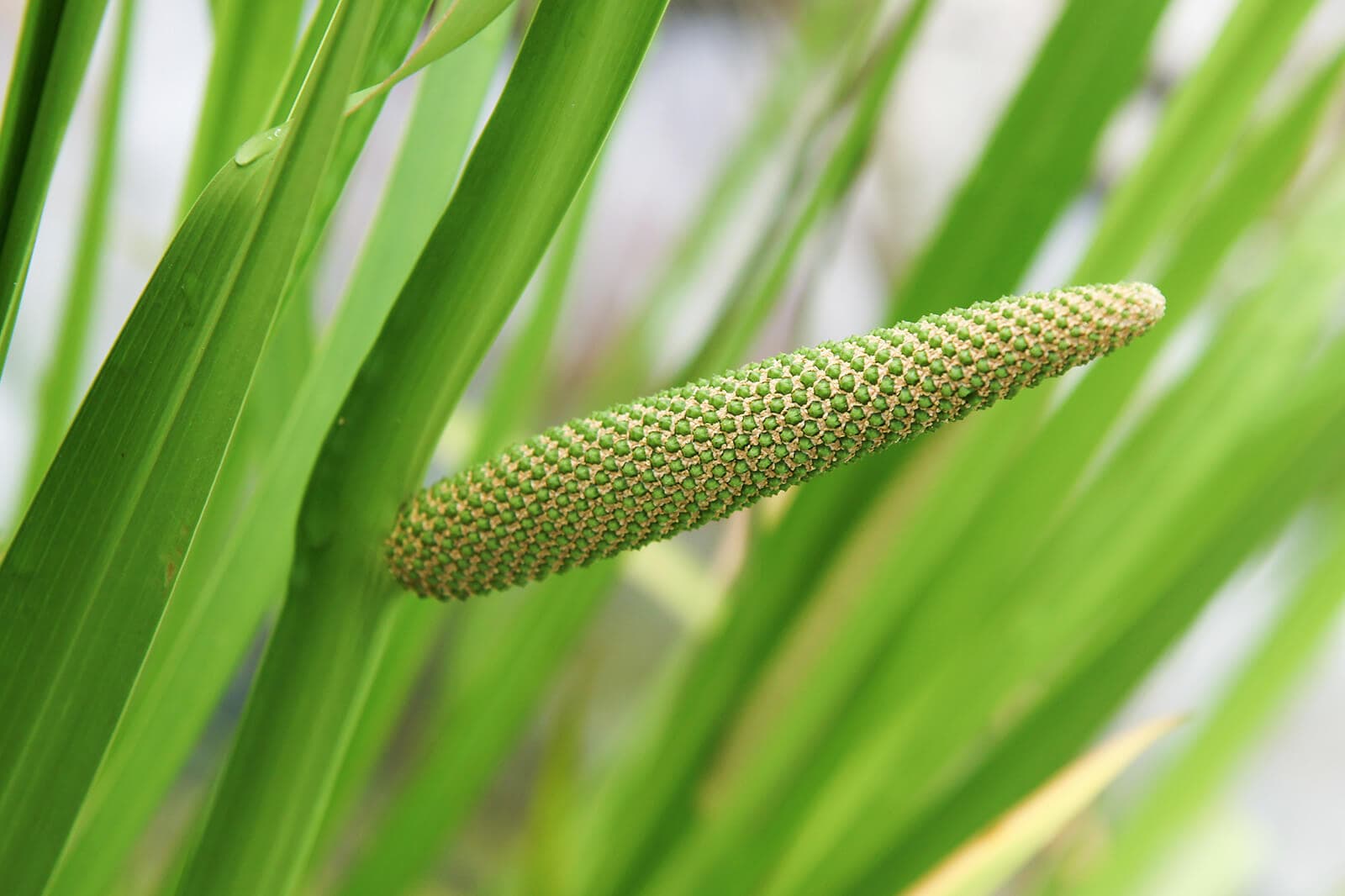
Scientific Name
Acorus calamus
Common Names
Calamus, Sweet Flag, Flag Root
Plant Family
Acoraceae
Location
Native to Northern Europe, Central Asia, and North America (though many American populations are hybrids or cultivars). Found growing in wetlands, along riverbanks, pond edges, and marshes. Thrives in wet, mucky soils and full sun to partial shade.
Description
A tall, reed-like perennial with long, sword-shaped leaves that resemble iris. The rootstock (rhizome) is thick, aromatic, and creeping — light brown outside and white inside. It has a sharp, warm scent that’s both sweet and spicy, almost gingery. The plant bears inconspicuous green-yellow flowers on a spadix. Its presence is calming yet powerful — grounding and steady in wet places.
Uses
Esteemed in herbal medicine for its broad spectrum of digestive, nervous system, and antimicrobial support. It functions as a strong carminative and antispasmodic, helping to relieve gas, bloating, dyspepsia, colic, and flatulent discomfort. Its warming rhizome and bitter tonics stimulate appetite and aid sluggish digestion. At the same time, it exhibits anti-inflammatory and antioxidant actions—studies of methanolic and DMSO extracts have demonstrated suppression of inflammatory markers, stabilization of membranes, and radical-scavenging effects.
It also possesses antimicrobial, antifungal, and anthelmintic activity; rhizome and oil extracts can inhibit bacterial and fungal growth and are traditionally used to treat respiratory congestion, coughs, worms, and damp or moldy conditions. In addition, A. calamus is used as a nervine and mild sedative: it has been applied for headaches, mental fatigue, anxiety and to enhance memory and intellect in traditional contexts.
Energetics
Warming, drying, pungent. Moves stagnant energy, clears fogginess, and stimulates digestive fire. Especially helpful for cold, damp constitutions.
Parts Used
Rhizome (dried or fresh)
Constituents
Volatile oils (asarone in some varieties), bitter principles, tannins, starches. American and Indian varieties have less or no β-asarone, which is considered carcinogenic in high doses in European types.
Dosage
- Tincture (1:5, 40% alcohol): 3–10 drops (strong medicine — use small doses)
- Chewing the root: A traditional method for throat, clarity, and traveling fatigue — just a sliver
- Decoction: ½ tsp root per cup of water, simmered 15–20 minutes — very bitter and stimulating
Notes on Use
Calamus is sharp — in taste, energy, and effect. Use it when someone is foggy-headed, indecisive, or exhausted from spiritual/emotional drain. It's especially useful for singers, speakers, and thinkers. Just a few drops can bring presence and clarity. It’s strong, so use it as a drop dose or paired with softer herbs like lemon balm or skullcap. Some consider it sacred, even visionary — a bridge between the physical and subtle realms.
Harvesting
• Rhizome: Harvest in fall or early spring. Scrub well and slice fresh or dry for storage.
• Wild populations should be approached with respect and conservation in mind — use cultivated sources when possible.
Contraindications
Avoid in pregnancy. High doses may cause vomiting or overstimulation. European varieties with high β-asarone content are best avoided — American and Indian varieties are considered safer. Always start low and assess sensitivity.
Recipes
- Clarity Tincture: Calamus (drop dose), rosemary, gotu kola
- Sore Throat Root Chew: A thin slice of dried calamus, sucked or lightly chewed
- Focus + Energy Blend: Calamus, eleuthero, peppermint, tulsi